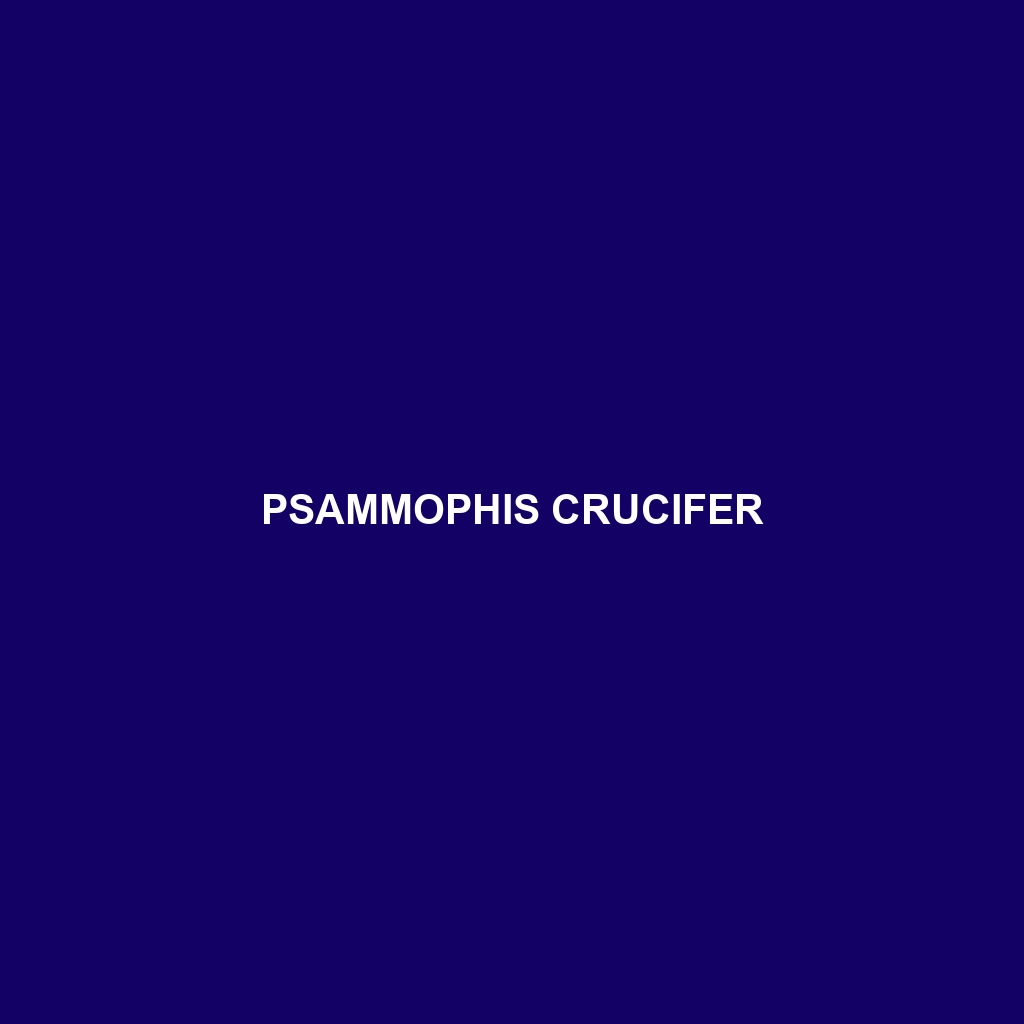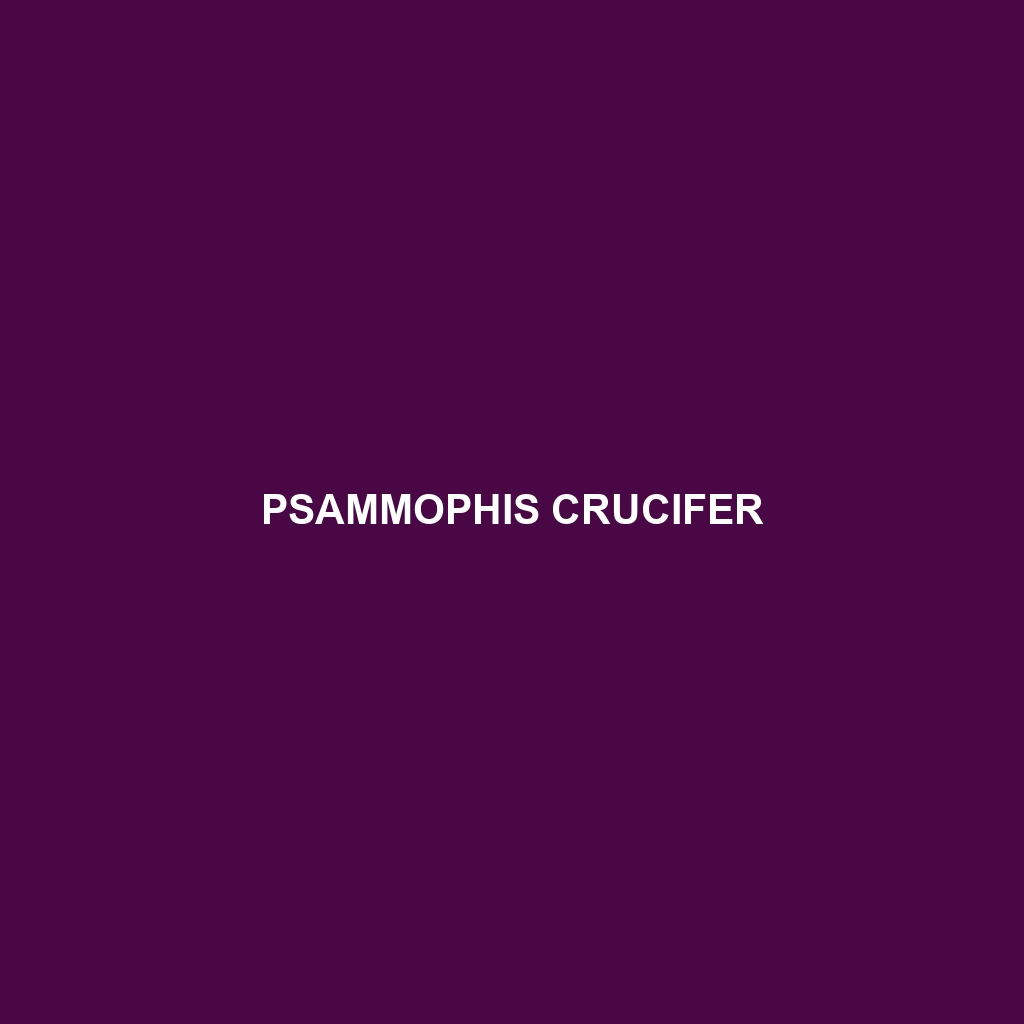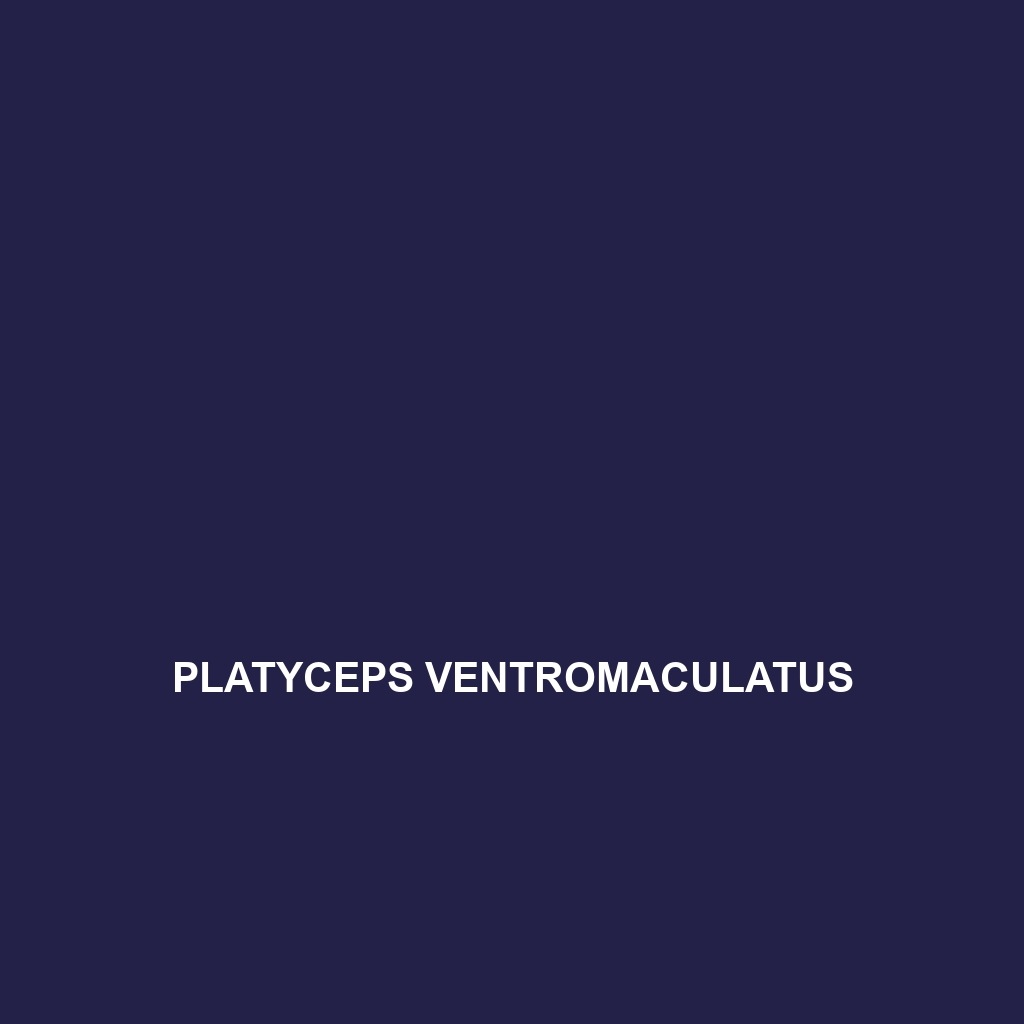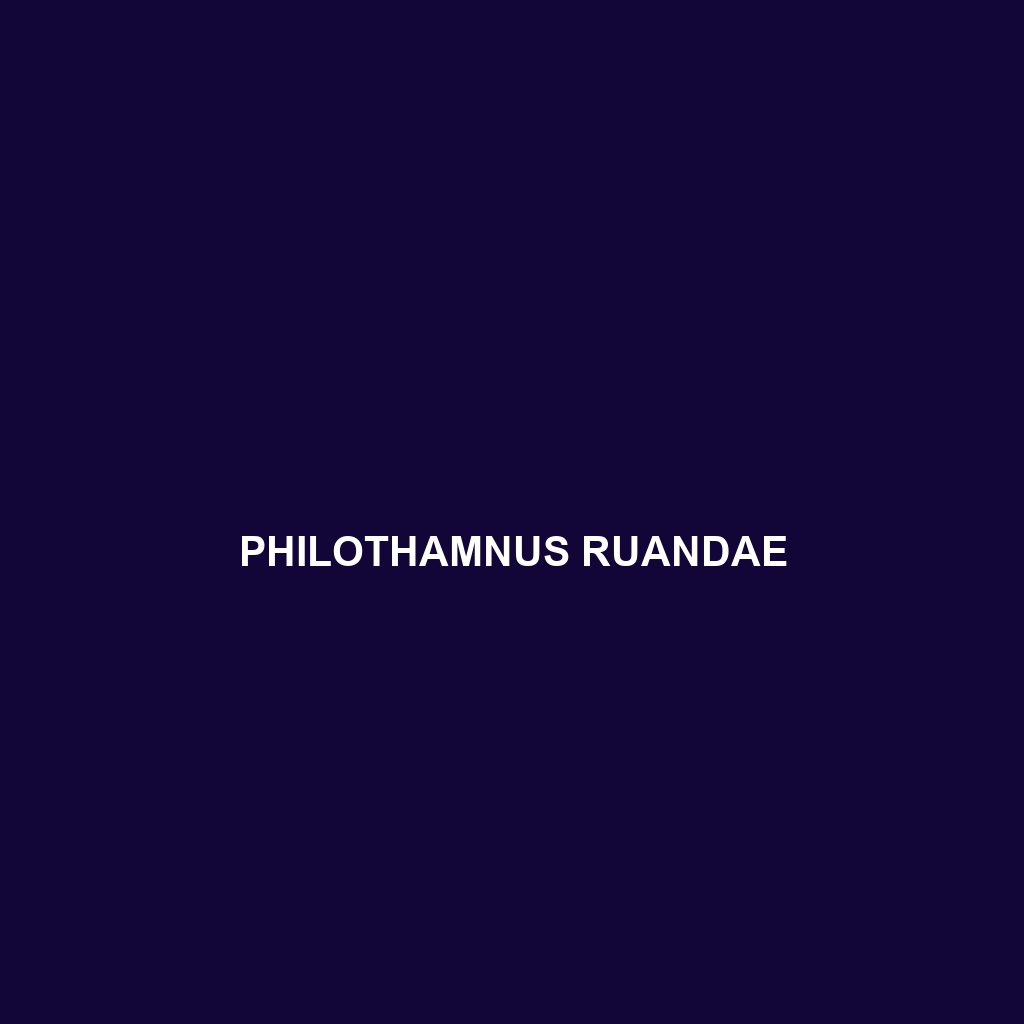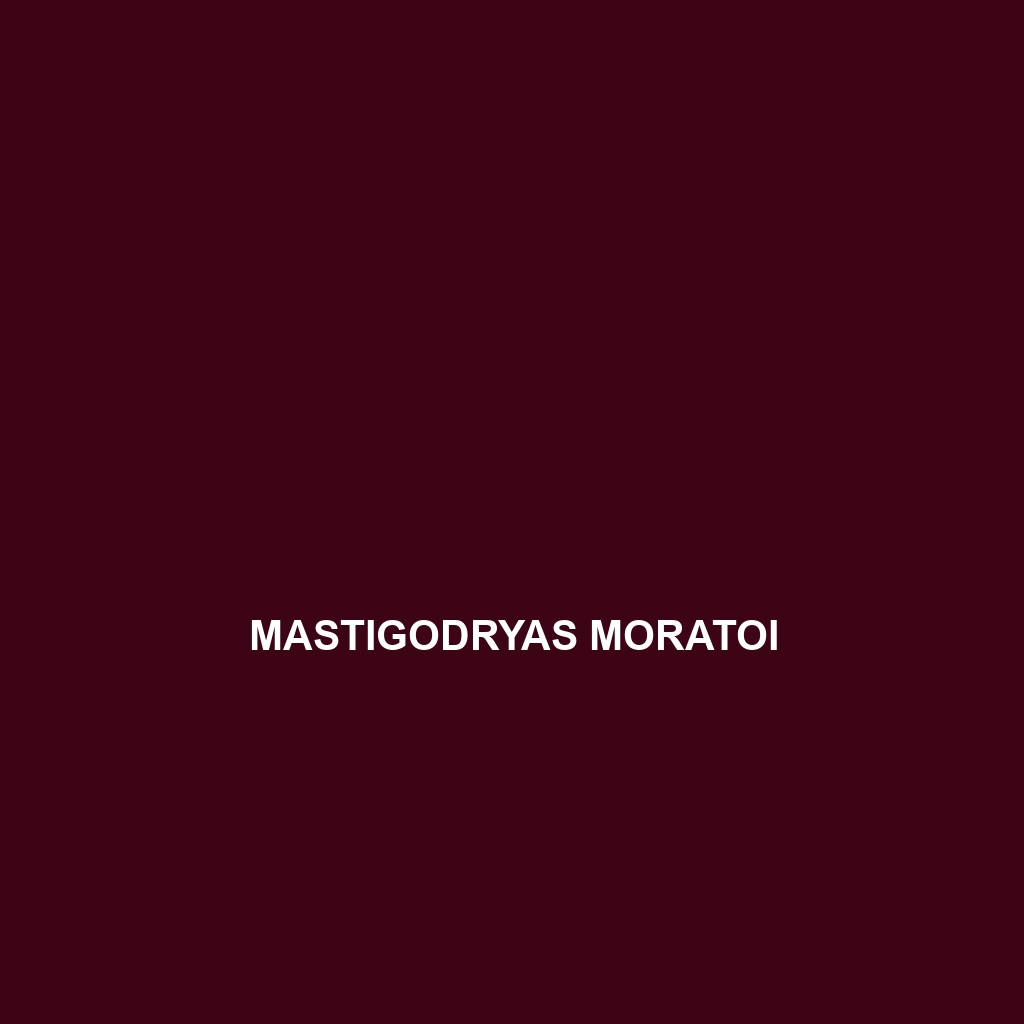<p><b>Ptyas dhumnades</b>, commonly known as the Indian Rat Snake, is a slender, diurnal species native to various habitats in India, thriving in forests, savannas, and agricultural lands. Ranging from 1.5 to 3.5 meters in length, it is characterized by its glossy scales and remarkable climbing abilities, playing a crucial role in controlling rodent populations and maintaining ecological balance.</p>
Tag: snake adaptability
Psammophis crucifer
<strong>Psammophis crucifer</strong>, commonly known as the <strong>Crossed Sand Snake</strong>, is a slender, diurnal snake typically measuring 70-90 cm long, adorned with pale yellow to beige scales and distinct dark cross-like bands. Thriving in a variety of habitats across eastern and southern Africa, it preys on insects and small vertebrates while playing a crucial role in maintaining ecological balance.
Ptyas dhumnades
<p><b>Ptyas dhumnades</b>, commonly known as the Indian Rat Snake, is a slender, diurnal species native to various habitats in India, thriving in forests, savannas, and agricultural lands. Ranging from 1.5 to 3.5 meters in length, it is characterized by its glossy scales and remarkable climbing abilities, playing a crucial role in controlling rodent populations and maintaining ecological balance.</p>
Psammophis crucifer
<strong>Psammophis crucifer</strong>, commonly known as the <strong>Crossed Sand Snake</strong>, is a slender, diurnal snake typically measuring 70-90 cm long, adorned with pale yellow to beige scales and distinct dark cross-like bands. Thriving in a variety of habitats across eastern and southern Africa, it preys on insects and small vertebrates while playing a crucial role in maintaining ecological balance.
Platyceps ventromaculatus
<p><b>Platyceps ventromaculatus</b>, also known as the Moroccan snake, is a medium-sized predator native to southeastern Morocco and Algeria, thriving in sandy savannas and semi-arid climates. With a distinctive elongated head, smooth scales, and adaptable hunting techniques, this species plays a crucial role in maintaining the ecological balance by controlling small mammal and insect populations.</p>
Philothamnus ruandae
The Ruanda Green Snake (Philothamnus ruandae) is a slender, vibrant green snake native to East Africa’s rainforests, savannas, and temperate forests, known for its arboreal habits and diet primarily consisting of small vertebrates. With its smooth, glossy scales and keen vision, this diurnal predator displays remarkable adaptability and plays a crucial role in maintaining ecological balance.
Oligodon unicolor
<b>Oligodon unicolor</b> is a small, nocturnal snake native to the tropical and subtropical regions of Southeast Asia, known for its slender body, muted brown or gray coloration, and solitary behavior. This species plays a crucial role in its ecosystem by preying on small mammals and invertebrates, and is considered of least concern in conservation status, though it faces threats from habitat destruction.
Naja oxiana
Discover the Central Asian Cobra (Naja oxiana), a versatile predator native to Central Asia's diverse habitats, known for its striking appearance, venomous bite, and unique defensive behaviors. This species plays a crucial role in maintaining ecological balance by regulating populations of small mammals and reptiles.
Naja nivea
<b>Naja nivea</b>, commonly known as the Cape Cobra, is a highly adaptable snake native to Southern Africa, distinguished by its slender body, ranging from 1.2 to 2.0 meters in length, and variable coloration including shades of yellow, brown, or gray. This nocturnal predator primarily feeds on small rodents and birds, playing a crucial role in its ecosystem while being classified as a species of 'Least Concern' by the IUCN.
Mastigodryas moratoi
<p><b>Mastigodryas moratoi</b>, commonly known as Morato's Snake, is a striking green colubrid species native to the rainforests of Central and South America, recognized for its slender body and dark mottled markings. This diurnal predator primarily feeds on small rodents and amphibians, playing a critical role in maintaining ecological balance within its habitat.</p>

